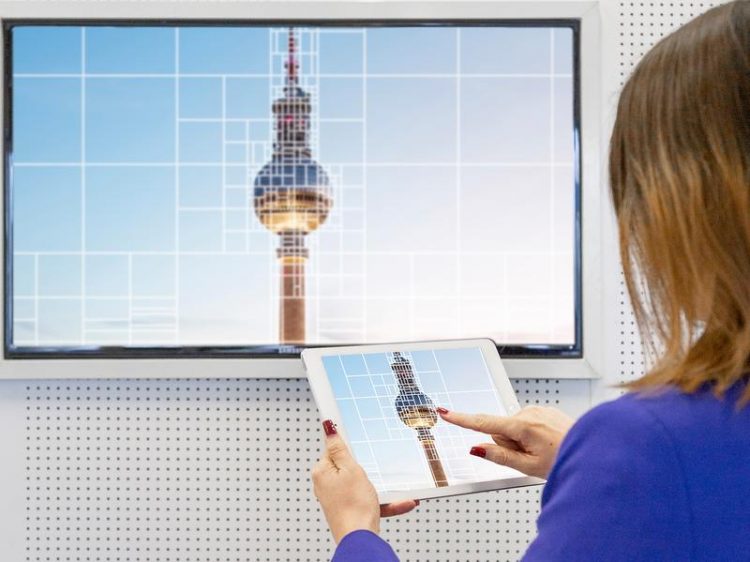Next generation video: WDR and Fraunhofer HHI present significantly improved video quality at IFA 2019

© Fraunhofer HHI
VVC/H.266 is the successor standard to HEVC/H.265. The latter is currently the most modern and efficient standard for Video Coding and is used, for example, in smartphones for recording and playing videos and streaming high-definition video content on flat-screen televisions.
The Fraunhofer HHI was significantly involved in the development of HEVC/H.265 as well as its predecessor AVC/H.264, and is once more involved in the successor standard VVC/H.266. WDR is expecting the cooperation to primarily benefit viewers in terms of both video quality and data transmission costs.
Compared to HEVC/H.265, VVC/H.266 should allow data rate savings of up to 50 percent. Thus, a more efficient data transmission is possible in the fixed and especially in the mobile network, where the data capacity is limited. For example, a 90-minute UHD video encoded with HEVC/H.265 currently requires about 10 gigabytes of data, while with VVC/H.266 it will only require about 5 gigabytes.
The new VVC/H.266 standard is expected to be officially released in summer 2020. In the course of 2021, the first products based on the new standard are expected to be launched commercially. However, WDR and Fraunhofer HHI are already collaborating on testing prototypes in the laboratory.
Initial results can be seen at the IFA exhibition from September 6 to 11 at the joint booth with Deutsche TV-Plattform (booth 203a, hall 26).
Benjamin Bross, benjamin.bross@hhi.fraunhofer.de, +49 30 31002 622
https://newsletter.fraunhofer.de/-viewonline2/17386/399/279/ldL144xW/ZKvZCqOqAo/…
https://www.hhi.fraunhofer.de/en/press-media/press-releases.html
Media Contact
All latest news from the category: Trade Fair News
Newest articles

Properties of new materials for microchips
… can now be measured well. Reseachers of Delft University of Technology demonstrated measuring performance properties of ultrathin silicon membranes. Making ever smaller and more powerful chips requires new ultrathin…

Floating solar’s potential
… to support sustainable development by addressing climate, water, and energy goals holistically. A new study published this week in Nature Energy raises the potential for floating solar photovoltaics (FPV)…

Skyrmions move at record speeds
… a step towards the computing of the future. An international research team led by scientists from the CNRS1 has discovered that the magnetic nanobubbles2 known as skyrmions can be…





















